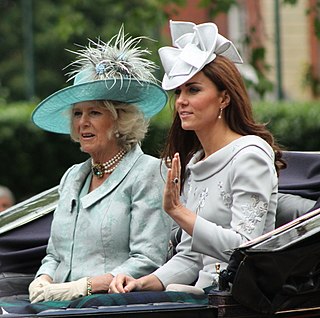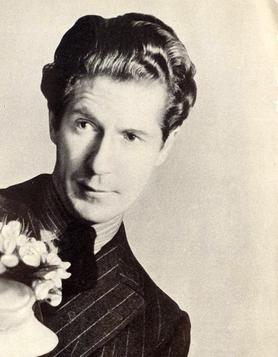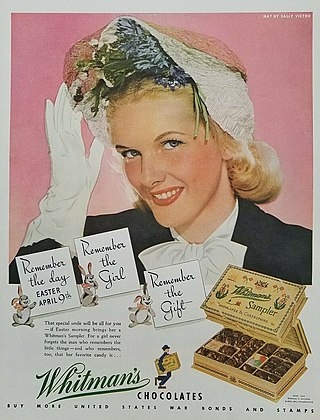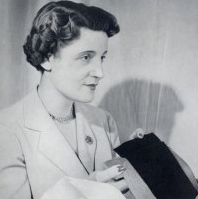
Philip Anthony Treacy is an Irish haute couture milliner, or hat designer, who has been mostly based in London for his career, and who was described by Vogue magazine as "perhaps the greatest living milliner". In 2000, Treacy became the first milliner in eighty years to be invited to exhibit at the Paris haute couture fashion shows. He has won British Accessory Designer of the Year at the British Fashion Awards five times, and has received public honours in both Britain and Ireland. His designs have been displayed at the Victoria and Albert Museum and the Metropolitan Museum of Art.

Hat-making or millinery is the design, manufacture and sale of hats and other headwear. A person engaged in this trade is called a milliner or hatter.

Sir Norman Bishop Hartnell was a leading British fashion designer, best known for his work for the ladies of the royal family. Hartnell gained the Royal Warrant as Dressmaker to Queen Elizabeth in 1940, and Royal Warrant as Dressmaker to Queen Elizabeth II in 1957. Princess Beatrice also wore a dress designed for Queen Elizabeth II by Hartnell for her wedding in 2020.

Roger Maurice Louis Bohan was a French fashion designer, best known for his 30-year career at the house of Dior.

Caroline Reboux was a Parisian milliner and French fashion designer. She opened her first boutique at 23 rue de la paix in Paris in 1865, which she continued to operate throughout her life. Reboux opened other shops in Paris and London starting in 1870. She trained other milliners who became famous in their own right, including American milliner Lilly Daché and French milliner Rose Valois. Reboux's most famous shop was located at 9 Avenue Matignon in Paris, which carried on operating after her death for almost three decades under the direction of Lucienne Rabaté known as "Mademoiselle Lucienne" the most famous parisian milliner at that time.

Simone Mirman (1912–2008) was a Paris-born milliner based in London, chiefly known for her designs for the British royal family.

Stephen Jones OBE is a British milliner based in London, who is considered one of the most radical and important milliners of the late 20th and early 21st centuries. He is also one of the most prolific, having created hats for the catwalk shows of many leading couturiers and fashion designers, such as John Galliano at Dior and Vivienne Westwood. His work is known for its inventiveness and high level of technical expertise. Jones co-curated the 2009 exhibition Hats: An Anthology for the Victoria and Albert Museum.
Graham Smith is a milliner from Kent, England. Beginning his career at a time when hats were an everyday essential for fashionable women, he worked with leading couturiers in Paris and London, later establishing his own brand and also working with mainstream fashion brands such as Kangol.
Frederick Fox LVO was an Australian-born British milliner who designed hats for Queen Elizabeth II and other members of the British Royal Family.

A picture hat or Gainsborough hat is an elaborate woman's hat with a wide brim. It has been suggested that the name may be derived from the way the broad brim frames the face to create a "picture".

Otto Lucas was a German-born, London-based milliner. Running a hugely successful hatmaking studio in London between the 1930s and the 1970s, his business supplied both major stores throughout Europe, the US and Australia and hats for private clients such as Greta Garbo and Wallis Simpson. His career was cut short when he was killed in a plane crash over Belgium in October 1971.

Aage Thaarup (1906–1987) was a Danish-born milliner who ran a celebrated hatmaking business in London between the 1930s and 1970s.

John Richardson Boyd MBE was a Scottish milliner based in London. Designing hats for over seventy-five years, Boyd was one of London's most respected milliners and is known for his creations for Diana, Princess of Wales and Anne, Princess Royal. Boyd was a milliner to three generations of Diana's family – Diana, her mother Frances Shand Kydd and grandmother Ruth Roche, Baroness Fermoy – and had remained at the centre of his craft adding another generation of royals with Catherine, Duchess of Cambridge. Boyd had one of the longest millinery careers in the world whilst continuing to practise his art before his death in 2018. Boyd’s label continues with his protégé and senior milliner Sarah Marshall.

A draped turban or turban hat is a millinery design in which fabric is draped to create headwear closely moulded to the head. Sometimes it may be stiffened or padded, although simpler versions may just comprise wound fabric that is knotted or stitched. It may include a peak, feather or other details to add height. It generally covers most or all of the hair.

A cartwheel hat is a hat with a wide-brimmed circular or saucer-shaped design. It may be made in a variety of materials, including straw or felt and usually has a low crown. It may be similar to the picture hat and halo-brimmed hat in shape. Typically, it is worn at an angle to show off the curve of the brim, rather than being worn at the back of the head in the manner of a halo hat.
Jean Barthet (1920–2000) was a French milliner who first rose to prominence in the 1950s as hat maker to Hollywood and French film stars, also designing hats for films such as The Young Girls of Rochefort.

A mushroom hat is a millinery style in which the brim of the hat tilts downwards, resembling the shape of a mushroom. It is a style that first emerged in the 1870s and 1880s, when it was usually made of straw. It became fashionable again from around 1907 to the late 1920s; these versions featured a distinctly downturned brim although the size and shape of the crown varied according to prevailing fashions.

A lampshade hat is a millinery design in which the hat has a small circular crown – typically flat, but sometimes rounded – and flares outwards to create a cone-like profile. In shape, it may have some similarities to the pillbox and bucket hat, both of which were popular at around the same time, although the classic lampshade design is longer and more flared than a pillbox and is generally made of stiffer material than a bucket hat.

A bumper brim is a millinery feature in which the hat brim is tubular in design, making it a prominent feature of the hat. In order to achieve this effect, the brim may be rolled, stiffened or padded. A bumper brim can be added to a variety of hat designs, from small to large.

Sally Victor was a prominent American milliner from the late 1920s through the 1960s. Her designs were popular with Hollywood actresses such as Irene Dunne, Helen Hayes, and Merle Oberon, as well as First Ladies Mamie Eisenhower and Jacqueline Kennedy, and Queen Elizabeth II.

















